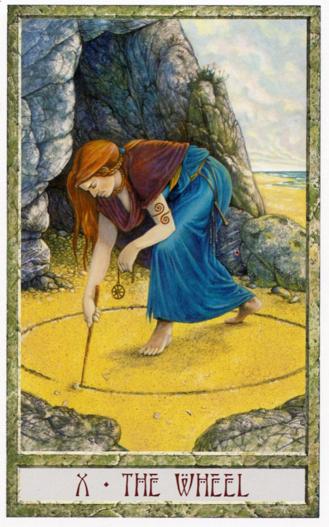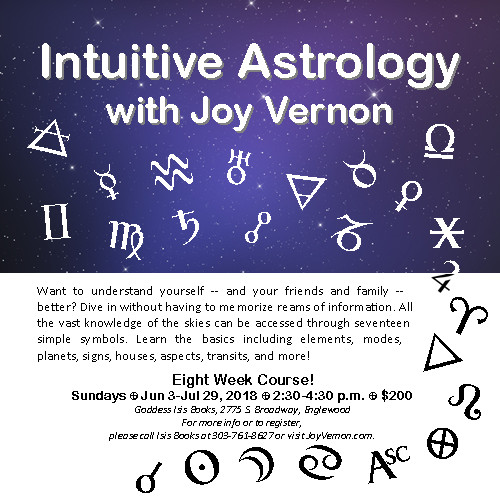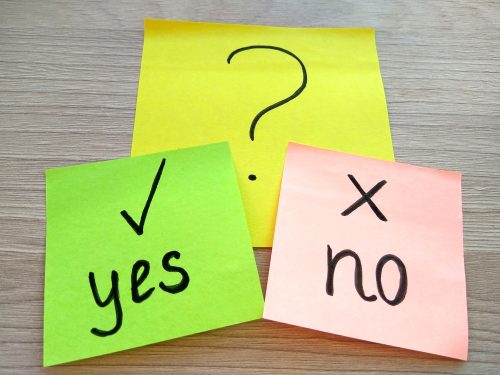Welcome to the Tarot Blog Hop!
PREVIOUS | MASTER LIST | NEXT
What I Can Teach the World
Morgan Drake Eckstein of Gleamings from the Golden Dawn, gave us a refreshingly simple topic: “What I can teach the world.” Curiously, an odd series of events promptly unfolded. First, even though I’ve been talking about going back to handwriting blog posts, I had not yet implemented that practice. But this time I grabbed an old notebook and sat down with it to start jotting down ideas. Second, I realized the notebook was from 2011 (the year Hal and I first met), so I got caught up reading old entries. Third, I came across an entry that contained the phrase, “I need to educate the public.” Wow! I had already done this work and chosen what I can teach the world. So, did I do it? Let’s see!
The Purpose and Benefit of Ritual
Here’s a transcript of my journal entry:
8-17-11
I have been thinking about the purpose and benefit of ritual a lot lately. I think one of my big hold-ups in implementing my Empyrean Key process is that in my mind and in my practice it centers around ritual and I don’t want to ask people to do ritual if it’s not their thing. But what I think needs to happen is that I need to educate the public on what ritual is, how it’s done, how it works, etc. I think that if I can compare ritual to meditation, people will start to get it, because I hear so often that people want to meditate but don’t know how, can’t sit still, mind wanders, etc. etc. Ritual is designed to overcome all of these problems.
I continued by outlining four levels of ritual:
- Physical/Earth: Ritual consists of a series of prescribed movements that are done in a specific way in a specific order. Performing these movements gives the body something to do in a focused manner.
- Mental/Air: The relative complexity of the ritual stimulates the mind. The mind must remember every step of the ritual, the mind must coordinate the physical/mental/emotional/energetic parts of the ritual. Also, as the element air, we say certain words during the ritual. This gets the voice involved and the breath involved.
- Emotional/Water:
- The creation of the ritual will stem from an emotional need or desire: the emotions are motivation and trigger for the creation and implementation of the ritual work. Also, a key component of ritual work is connecting with a higher energy and so allowing an emotional connection to form to this energy centers the link that we need to energize our rituals. When the source of the energy is anthropomorphized, we can actually feel a deeper emotional connection than if we conceive of the energy abstractly. If we prefer a more abstract paradigm for the energy, perceiving it as divine love facilitates the emotional connection.
- Also, I think the water or emotional level provides the intuitive connection that brings inner knowledge or understanding.
- Visualization is an important part of ritual and stimulates both the mental and emotional aspects. The ability to see is dependent on light and light is often associated with air, but more importantly images are created in the visual cortex which is associated not only with seeing but with dreaming. And because the visualizations we do in ritual, such as imagining a particular symbol or image, are often not literally there to be seen (such as looking at the same image on a piece of paper), we are working on the dream level, which is associated with water.
- Energetic/Fire: Ritual work also involves energetic work such as building energy in a particular part of the body, directing or building energy toward a specific purpose or intention, receiving an influx or flow of energy, or recognizing the non-duality of the energetic source and ourselves.
I used these musings to develop a four-part meditation class, which I first taught as a weekly teleclass starting Thursday, May 10, 2012. I have since repeated the class. It’s never very full, but I always receive excellent reviews from participants. Perhaps I should re-brand and re-market it and offer it again. I do have recordings from each time I taught it, and a pretty nice handout, so I could probably put together one of those downloadable e-course types of things. Then I could teach the world my ideas. (What do you think?)
Ritual Symbolism in Tarot Cards
Ok, so I better mention tarot somewhere here so I can stay on task. I think I’ll share with you which cards I tend to get when the tarot suggests I do ritual work. I usually get one of the fours or the Wheel. Sometimes the World, which like the Wheel, shows essentially a circle with the four corners marked. Sometimes the Sun for solar rituals or the High Priestess or Moon for lunar rituals. But mostly the Wheel and the fours, so I’ll tell you more about those.
The Tarot Fours

I believe the first time I started seeing ritual suggestions in the cards was in the Four of Swords from the Tarot of the Old Path. There is a walled enclosure with four swords marking the corners like watchtowers. This might sound more like the Four of Disks from a Thoth-style deck, but that’s how the card looked and that’s the first time the tarot told me I needed to be doing my rituals. Nowadays I’ll get the Four of Wands in my current primary reading deck, the Legacy of the Divine, which shows the wands arranged in a protective, enclosing formation.
Any four in which the suit icons are arranged in compass point symmetry can indicate ritual work. Consider the Four of Cups from the Modern Spellcaster’s Tarot, which unlike the same card from most other decks has the meditator sitting within the circle (square? diamond?) of cups. You might be tempted to use any card that shows a circle or someone meditating, but fours are the key.
The importance of the four, and the geometry of the square, is its relevance in ritual work. The first step in most modern formal ritual work is to create a sacred space, and this is often done by physically or energetically demarcating a circular boundary of the ritual space, and then indicating, marking, or calling in the four compass point directions along with their elemental and other symbolism. When I would draw fours with this pattern, I knew I needed to cast a circle and call the quarters.
The Wheel of Fortune

Once I started using the DruidCraft deck, the Wheel was added to my set of go-to ritual cards. You might expect it to be that deck’s invoking High Priestess, but ritual for me is more about the nuts and bolts of circle-casting and quarter calling.
As mentioned above with the fours, one of the first steps of ritual work is casting a circle. This is clearly shown in this image, and subsequently entered my tarot vocabulary for other Wheel cards. I particularly like this image because of the physical drawing of the circle and because it is very low-tech, low-prop, and generally low-maintenance. This says to me, “Nothing fancy, just set space and do your work.” Well, after traveling across the world so I can do it in a sandy, protected cove in the British Isles.
This particular Wheel is referencing the Wheel of the Year, the annual cycle of ritual celebrations used in some traditions. So this card can also represent adding seasonal rites to monthly rites or propose that the work be done in the context of a larger cycle.
I hope you enjoyed this tour of ritual work and how it shows up in the cards for me! I’m interested to hear what everyone else has to say, and if you are too, please use the links at the top and bottom of this post to travel this particular wheel.
A Tarot Ritual for You
If you’d like a tarot ritual you can use to charge a tarot deck, please visit “Reading and Ceremony for Charging a Tarot Deck,” an article and ritual I wrote in 2006 that was published at the Llewellyn Journal. I love this ritual because it starts with a reading done with the deck you’d like to charge, and the ritual itself is then adapted from the interpretation you do of the reading. It’s all written out clearly, with fill-in-the-blank areas for your original words, based on the cards you draw, to become part of the ceremony.
PREVIOUS | MASTER LIST | NEXT
***








[…] PREVIOUS|MASTER LIST|NEXT […]
I think that you should roll out your ideas again… whether or not they rent and, is something that I’m less certain of… my impression is that you may simply have been ahead of your time…
G’ah! Autocorrect zapped me there! Whether or not they need a rebrand…
I just figured you meant whether or not the classes actually paid the rent, which they haven’t previously! It would be nice to be ahead of my time…
You completely describe me as one of those people for whom ritual is not their thing. My mind does hop about like a bunny on amphetamines unless I am completely engrossed I something, in which case, the outside world simply ceases to exist, I shall have to read your article and give it another go 🙂
I love this idea of the compass point symmetry telling you to embrace some ritual work – really nice observation! And the Druidcraft is also my go-to deck for ritual work. It just feels perfect for it, doesn’t it?
I think you should definitely do an e-course for your meditation series. Online courses are so popular these days. If it’s something the person downloads, than it can be accessible any time, without you having to lead the course. That could broaden your audience. I think that would a great idea on how to get your teachings out and spread the word on ritual practice 🙂
Thank you so much for this post, Joy! I must say for me, the DruidCraft is totally a deck for rituals – I cannot even use it for readings. 🙂 I have trimmed mine because the borders made it so big, and the trimmed versions channels clearer energies to me. Sometimes I do feel like involved in Magic – anytime I have asked Tarot for Magic, it was more than influential, so I know it really works. This Modern Spellcaster’s Tarot is also very nice!